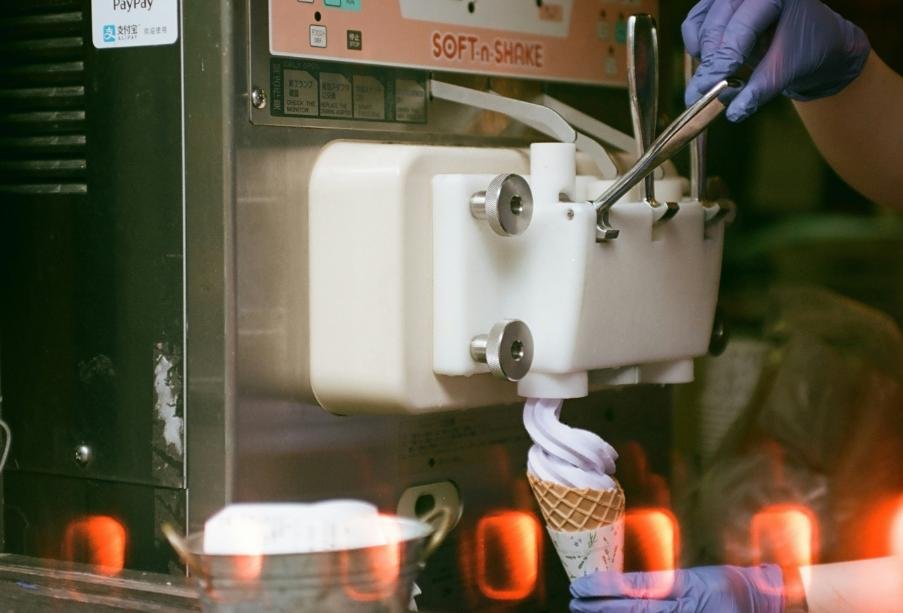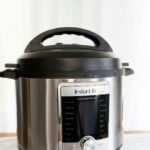Introduction to Soft Serve Ice Cream Machines
Soft serve ice cream machines are specialized appliances designed to create the velvety, creamy texture that distinguishes soft serve ice cream from traditional frozen desserts. These machines have gained significant popularity among home chefs and enthusiasts who are eager to experiment with ice cream making at home. Known for their ease of use and the ability to deliver a consistently smooth product, soft serve machines cater to both adults and children, transforming ordinary gatherings into delightful experiences.
At the core of what makes a soft serve ice cream machine appealing is its versatility. These machines can produce a wide range of treats, including classic soft serve ice cream, frozen yogurt, gelato, and even sorbet. This versatility allows users to explore different flavor profiles and textures, accommodating various dietary preferences and restrictions. Whether one prefers a rich chocolate cone or a refreshing fruit-flavored swirl, a soft serve machine opens the door to endless possibilities in dessert creation.
In addition to the fun of creating personalized desserts, owning a soft serve ice cream machine provides several benefits for home use. First and foremost, it encourages creativity in the kitchen, allowing individuals and families to invent and share unique flavor combinations. Additionally, the convenience of having such a machine at home reduces the need for recurring visits to local ice cream shops, ultimately saving money in the long run. Furthermore, soft serve machines promote healthier eating habits; by using the finest ingredients and controlling the sugar levels, users can craft homemade desserts that are both delicious and nutritious.
In essence, soft serve ice cream machines are not just appliances but gateways to creativity, enjoyment, and healthier indulgence, making them a worthwhile investment for any dessert lover.
Types of Soft Serve Ice Cream Machines
When considering the purchase of a soft serve ice cream machine, it is essential to understand the different types available on the market. Each type has unique features and capabilities, making them suitable for various needs ranging from home use to commercial applications.
Countertop models are designed primarily for home use. These machines are compact and lightweight, making them easy to fit in most kitchen spaces. They typically have a smaller capacity compared to other types, which is ideal for families or individuals who want occasional soft serve ice cream treats. The convenience of a countertop soft serve machine is a significant advantage since they are generally easy to operate and clean. However, their productivity might not meet the demands of larger gatherings or frequent use.
Stand-alone soft serve ice cream machines offer a step up in both capacity and performance. These units are generally more powerful and can serve ice cream in larger volumes, making them suitable for parties and small events. They often come with additional features, such as adjustable texture and flavor settings, allowing users to customize the ice cream experience. However, one must consider the amount of space required for these machines and the higher price point compared to countertop models.
Lastly, commercial-grade soft serve ice cream machines are engineered for high-volume operations, such as restaurants, ice cream shops, and events. These units can produce a continuous output of soft serve ice cream, catering to high demand. While they offer superior durability and performance, the cost can be prohibitive for home users. Additionally, commercial machines may require specialized training for optimal operation. Understanding the pros and cons of each type will assist potential buyers in selecting the best soft serve ice cream machine that meets their specific requirements.
Key Features to Consider
When selecting a soft serve ice cream machine, several key features must be carefully evaluated to ensure the right choice is made. First and foremost is the capacity of the machine. This feature directly influences the volume of ice cream that can be produced at one time. For family use, a smaller capacity machine may suffice, while commercial applications often require units that can handle larger volumes to meet customer demand.
Equally important is the ease of use. A user-friendly interface can significantly enhance the overall experience, particularly for those new to operating an ice cream machine. Look for machines that incorporate straightforward controls and clear instructions. A clear display and intuitive design can streamline the ice cream-making process, making it enjoyable and efficient.
Cleaning requirements should also be a priority. Soft serve machines often have multiple components that can be cumbersome to clean. Models that feature removable parts or dishwasher-safe components can save users considerable time and effort. This aspect is vital for maintaining hygiene and ensuring that the machine remains in good working order over time.
Furthermore, consider additional functionalities, such as mixing options and temperature control. Machines with built-in mixers can create a variety of textures and incorporate mix-ins seamlessly, enhancing the ice cream’s flavor and experience. Additionally, good temperature control is essential for achieving the perfect consistency and maintaining the quality of the soft serve. Features such as adjustable temperature settings allow for customization based on preferences and recipes.
In conclusion, the ideal soft serve ice cream machine should incorporate sufficient capacity, user-friendly design, ease of cleaning, and valuable additional features for a comprehensive and enjoyable ice cream-making experience.
Understanding the Price Range
When considering the purchase of a soft serve ice cream machine, understanding the price range is crucial for making an informed decision. Soft serve ice cream machines typically range in price from a few hundred to several thousand dollars. The price is influenced by multiple factors, including the machine’s capacity, build quality, brand reputation, and additional features such as mix-in capabilities or auto-clean systems.
Entry-level soft serve machines, often designed for home use, can cost anywhere from $200 to $600. These models usually have smaller capacities and may require more manual operation. While they are a suitable choice for individuals or small families, it’s important to manage expectations regarding the texture and quality of the ice cream produced. In this price tier, buyers can expect basic functionality and fewer advanced features.
Mid-range machines, priced between $600 and $1,500, offer a balance of quality and functionality. These machines generally cater to larger households or small gatherings, providing a more consistent product and often including features like automatic mixing and essential safety features. Consumers can expect to find a robust construction and improved performance in this category, making it a better value if you plan to use the machine regularly.
At the higher end, machines that cost over $1,500 are typically commercial grade, designed for extensive use in restaurants or ice cream parlors. These machines boast high capacity, advanced features, and superior durability. Additionally, they often include warranty options and customer support, which can significantly influence their value for money. Thus, when evaluating a soft serve ice cream machine, it is essential to consider how often you will use it and the specific features that will enhance your home dessert experience.
Popular Brands and Models
When it comes to selecting a home soft serve ice cream machine, several trusted brands stand out in the market for their quality, reliability, and performance. These brands have garnered positive feedback from users, making them popular choices for those looking to indulge in homemade ice cream.
One of the leading brands is Cuisinart, renowned for their culinary appliances. The Cuisinart ICE-45 is a popular model among ice cream enthusiasts. This machine features a user-friendly design that allows for easy operation. With its ability to make up to 1.5 quarts of soft serve ice cream in under 20 minutes, users appreciate its efficiency and the rich texture of the ice cream it produces. Additionally, it comes with three different conical nozzles to create swirls, allowing for customization and creativity in serving.
Another brand worth considering is Whynter, which specializes in high-quality appliances. The Whynter SIM-30CC soft serve ice cream machine is favored for its commercial-grade performance, making it suitable for home use as well. This model offers a robust build and the capacity to create delicious soft serve in a rapid timeframe. Users particularly commend its two flavor options, providing versatility for family gatherings or parties.
Lastly, the Nostalgia brand is well-known for its retro-style kitchen gadgets and the Nostalgia ICMP600WD, which reflects a charming design. This model not only churns out soft serve ice cream but also gives users the nostalgic feel of a classic ice cream parlor experience. It has received praises for its compact size and ample output, making it an ideal choice for smaller kitchens.
Overall, exploring these popular brands and their models can significantly influence a buyer’s decision, ensuring they find a home soft serve ice cream machine that meets their needs and preferences.
Maintenance and Care Tips
Maintaining a home soft serve ice cream machine is essential for ensuring optimal performance and longevity. Regular cleaning and care not only enhance the quality of the ice cream produced but also prevent potential malfunctions. Here are some practical tips that can aid in the maintenance of your machine.
First and foremost, it is crucial to develop a consistent cleaning routine. After each use, make sure to clean all removable parts thoroughly with warm, soapy water. This includes the mixing bowl, the dasher, and any other components that come into contact with the ice cream mixture. Rinse these parts well and allow them to air dry completely before reassembling the machine. Additionally, consider a deep cleaning at least once a month, where you can use a food-safe sanitizer to ensure that all surfaces are disinfected.
Proper storage is another critical aspect of maintenance. When not in use, store your soft serve ice cream machine in a cool, dry place, preferably in its original packaging to protect it from dust and damage. Avoid exposing it to extreme temperatures or humidity, as these conditions can affect the machine’s performance and durability.
Troubleshooting common issues is also part of effective care. If you notice that your ice cream is not freezing properly, check the power supply, ensuring that the machine is properly plugged in. Additionally, inspect the ingredients used; high-fat content mixtures may require longer freezing times. If the machine makes unusual noises or shows error messages, consult the user manual for guidance on potential solutions.
By adhering to these maintenance tips, you can help your home soft serve ice cream machine function efficiently and enjoy delicious ice cream for years to come.
Tips for Making Perfect Soft Serve Ice Cream
Creating delightful soft serve ice cream at home is an enjoyable process that can yield delicious results when done correctly. To achieve the perfect consistency and flavor, it is essential to focus on several important aspects: ingredient selection, mixing techniques, and machine settings.
Firstly, the selection of ingredients plays a crucial role in determining the final product’s taste and texture. Use high-quality dairy products such as heavy cream and whole milk, as they ensure a creamy texture. Additionally, consider incorporating flavorings such as vanilla extract or chocolate syrup to enhance the taste. For a healthier option, fruit purées or natural sweeteners can be great alternatives. The balance of sugar is also important; too much can lead to an overly sweet taste, while too little can result in icy soft serve. Therefore, a dependable ratio of sugar to cream is vital.
Mixing techniques further influence the consistency of your soft serve. It is advisable to blend the ingredients until smooth, ensuring that there are no lumps or clumps. If you aim for a lighter texture, incorporate air into the mixture by whisking vigorously. This aeration is vital, as it contributes to a softer and fluffier outcome, vital for authentic soft serve ice cream.
Finally, the settings on your home soft serve ice cream machine can drastically affect the quality of the ice cream produced. Always follow the manufacturer’s instructions regarding churn time and freezing settings to ensure optimal texture. For best results, allow your mixture to chill in the refrigerator for several hours before adding it to the machine. This step prevents the ice cream from freezing too quickly, leading to a smoother consistency. By paying attention to these key elements, you can create mouthwatering soft serve ice cream that rivals that of professional ice cream parlors.
Health Considerations and Alternatives
When choosing a home soft serve ice cream machine, health considerations are paramount for both consumers and their families. One of the primary concerns is calorie content, as traditional soft serve can be high in calories and sugar. It is essential to be aware of the ingredients used, as they can significantly affect the nutritional value of the final product. Many commercial mixes contain a high quantity of sugars and preservatives that may not align with a balanced diet. Therefore, when preparing soft serve ice cream at home, you have the opportunity to create healthier versions by controlling the ingredients used.
Allergens present in common ice cream ingredients must also be taken into account. Dairy allergies, lactose intolerance, and nut allergies are prevalent issues that potential ice cream enthusiasts must be mindful of. For those with lactose intolerance, using lactose-free milk or coconut milk can provide a delicious alternative without causing discomfort. Similarly, nut allergies can be addressed by avoiding traditional toppings or flavorings that may contain traces of nuts.
Moreover, sugar alternatives are increasingly popular among health-conscious consumers. Natural sweeteners such as honey, agave syrup, or maple syrup can be used to reduce refined sugar intake without sacrificing flavor. Additionally, sugar-free options exist utilizing stevia or erythritol. These alternatives allow for greater flexibility in crafting a soft serve treat that satisfies cravings while being mindful of sugar consumption.
Implementing fresh fruits or purees can also enhance the health profile of your soft serve ice cream. Fruits not only add natural sweetness but also provide vitamins and antioxidants, making the treat a guilt-free indulgence. By exploring these healthier options and substitutions, it’s possible to enjoy soft serve ice cream at home without compromising on nutritional value.
Conclusion and Final Thoughts
Choosing the best home soft serve ice cream machine requires careful consideration of various factors to ensure that the selected model aligns with personal needs and preferences. Throughout this guide, we have explored essential features such as capacity, ease of use, versatility, and maintenance requirements. Each of these aspects plays a pivotal role in determining the right machine for individual households.
Considering the size of the machine is imperative to avoid any disappointment. For families or those planning to host gatherings, a larger capacity model may be preferred, while singles or couples may opt for a more compact device. It is also important to evaluate the type of soft serve ice cream maker available, as different models come with distinct functionalities, from basic machines to those offering advanced options like built-in freezers or multiple flavor settings.
Moreover, potential buyers should reflect on their ice cream-making experience and how often they plan to use the machine. Frequent users may benefit from investing in a more robust and feature-rich model that can produce a variety of flavors with ease, while occasional users could select a more budget-friendly alternative that adequately meets their needs.
Feedback from current ice cream machine owners can provide valuable insights into the practical considerations of different models. Therefore, we encourage readers to share their own experiences, favorite recipes, and any tips they may have learned along the way. This collaborative approach will not only enhance the decision-making process for prospective buyers but also enrich the home ice cream-making community.


